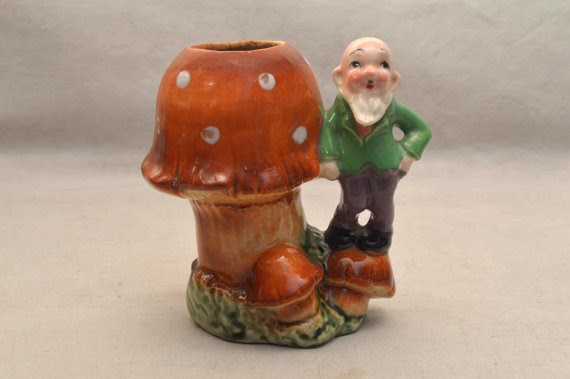Part Four:
Depression and Post-War Era
The wave of hope brought
forward by the art movements was greatly diminished by the worldwide
economic downturn known as “The Great Depression.” The depression
began in the US after the stock crash in 1929, which sent economic
shock-waves throughout the world, lasted about a decade, and preceded
the “War of all Wars.”
These tragic
circumstances had a great influence on all aspects of society
including fashion, design, and commerce. Out of necessity, this
became a time of prudence and resourcefulness: fashions became modest
and household items were practical. Everyone sought to conserve
resources first out of need, and later as a way to contribute to the
war effort. A perfect example of this era’s frugality can be seen
in the abundance of girls’ dresses made out of feed sacks. The
trend was fueled when manufacturers, realizing the housewives’
thriftiness, started producing sacks with small floral and other
prints. (Photo Credit: Country Woman Magazine,
girls wearing feed-sack dresses)
A popular household
item of the depression, which also came indirectly from the food
industry, was pressed colored glass later known as “Depression
Glass.” Companies, such as Quaker Oats, began putting small pieces
of glassware inside boxes of oats to increase sales. Depression glass
came in many colors and patterns. Some popular colors were pink,
blue, and green:
The
dismal world economy was a contributing factor to territorial wars
that began in Europe and eventual involved over 100 countries. The
USA entered the war in 1941 with the bombing of Pearl Harbor. After
the war ended in 1945 the US occupied Japan until 1953. During this
time, all items made in Japan for the US market were marked “Made
in Occupied Japan.” The date-specific mark has made these items
popular with collectors, and they are becoming increasingly difficult
to find. See this Mt.
Fuji Plate By
Comforte
as an example of these very
affordable historic collectibles:
 When
the war ended, the mood of the nation quickly turned from depression
to victory. Soldiers returned with strengthened love for home and
family; and advanced manufacturing, developed during war-time,
prompted new economic opportunity. We see this new outlook displayed
in full color in magazine ads such as this
one offered
at Mamie
Z Vintage.
When
the war ended, the mood of the nation quickly turned from depression
to victory. Soldiers returned with strengthened love for home and
family; and advanced manufacturing, developed during war-time,
prompted new economic opportunity. We see this new outlook displayed
in full color in magazine ads such as this
one offered
at Mamie
Z Vintage.

The
conservation of the last 15 years ends and makes way to color and
light in both fashion and home décor: dark sturdy woods are replaced
with painted woods and bright plastic; small flour-sack prints are
replaced with large bold patterns; and drab brown, grey, and blues
are replaced with white, gold, and the wildly popular pink! In this
Post-War
Era, the “American Dream” is renewed and promoted with
unprecedented elegance in Hollywood. Movies focused on romance,
adventure, and glam and Hollywood reached the height of its “Golden
Age.” Going to the movies became more than a way to get war-news;
it was a simple luxury and a venue to discover new trends. A most
popular design trend, later named “Hollywood Regency,” begins to
leave the sets of Hollywood and makes its way into “modern”
homes.
These
new trends influenced the Modern Movement, lasting into the 1960’s,
which we shall explore next time!
This is fourth of a five part series
on Design Styles written by Mary of FineRomance
on Etsy.











.jpg)



















































